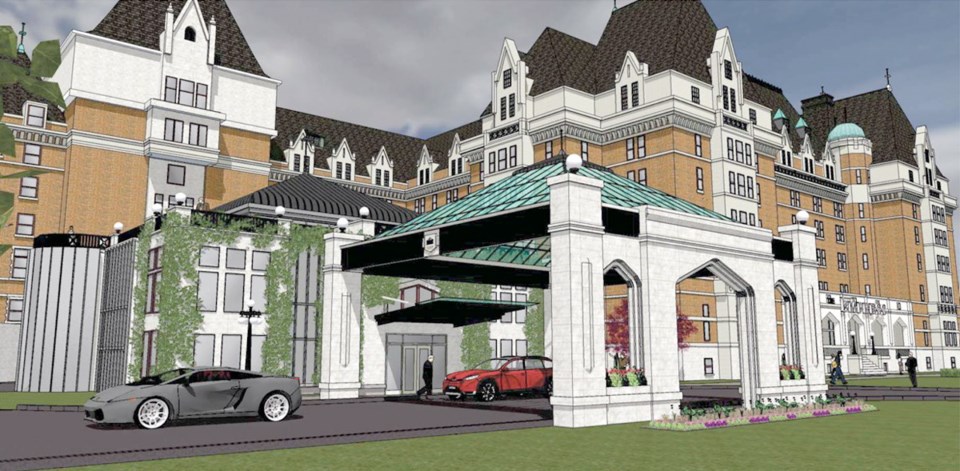The Empress Hotel is a privately owned business, yet many Victorians feel a sense of ownership because of its heritage aspects and its dominance of the Inner Harbour. Almost any change to the venerable hotel is sure to spark passionate public response.
It won’t be surprising if someone finds fault with the latest plan to build a detached porte cochère — a covered entrance — at the hotel’s main guest entry, but it’s a sound move from esthetic, heritage and business points of view.
It will also right a wrong. When the main entrance was moved from the centre of the building to the left side in 1989, it left the structure looking a little off-kilter.
“The existing entrance lacks a sense of arrival, functions poorly due to its lack of entrance visibility and does not contribute to the transitional ambience into what will become a newly upgraded interior lobby of the 1989 addition,” says a staff report to Victoria city councillors. The current entrance isn’t prominent enough, so “many guests mistakenly enter the hotel through the front veranda patio.”
The new addition will draw the eye — and guests — to the main entrance. And the architect’s rendering of the structure shows it will be in harmony with the hotel’s design, and will not detract from the Empress’s heritage aspects.
But there will likely be resistance to change, nothing new for the Empress. For years, it had no sign, and as a sign was going up above the front entrance, one man grumbled: “Anyone who doesn’t know this is the Empress shouldn’t be staying here.”
After Nat and Flora Bosa bought the hotel in 2014, they began a series of renovations aimed at making better use of the hotel’s space.
The decision to close the Bengal Lounge sparked a huge response, including a petition launched by a person who complained that “the new owners of the Fairmont Empress are destroying its history and everything that this heritage landmark stands for. We stood by and watched as they ripped out the weeping sequoias, and removed the ivy. Now they have plans to renovate into a modern contemporary hotel … this includes getting rid of the iconic Bengal Lounge.”
But the Empress, while registered as a national historic site, is not a static structure. Its completion in 1908 was followed by the addition of wings between 1909 and 1914 and in 1928. Several major renovations have taken place since then.
Preserving it does not mean keeping it exactly as it was at a certain time — it must be maintained, improved and used if it is to survive. Components such as plumbing, wiring and windows must be periodically modernized. The woodwork, roof and masonry — which is susceptible to damage from ivy — must be kept in good condition. To do otherwise is to invite decay.
And any alteration must take into account that the hotel must function successfully as a business.
Instead of being alarmed at what the current owners are doing to the Empress, Victorians should be grateful that someone cares deeply enough about the historic hotel to spend millions on its upkeep and improvement.



